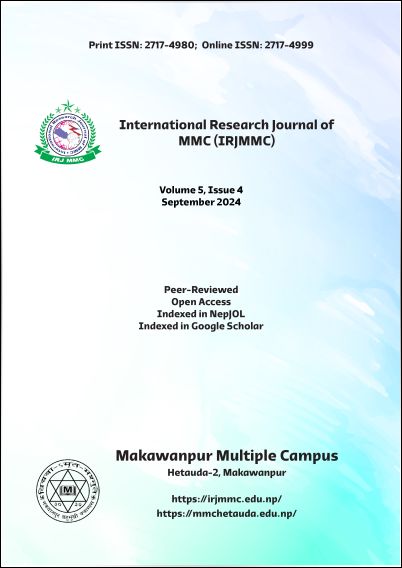Determining an Applicable Sample Size in Research Studies
DOI:
https://doi.org/10.3126/irjmmc.v5i4.70641Keywords:
Sample, Sampling, Population, Sampling frame, Sampling unit, Margin of error, Confidence levelAbstract
Determining a proper sample size is a critical aspect of research design as it influences the reliability and validity of study findings. The key objective of writing this article is to suggest some rudimentary formulae, easy software tools and a general sample size table to determine an applicable sample size to be used in research studies. To attain this objective, relevant books and journal articles have been taken as the sources of secondary data. After a comprehensive overview of the literature regarding the sample size, this article concludes that the confidence level, the margin of error, the population size, and the population proportion statistically determine the sample size in quantitative research studies. Similarly, the nature of population, and types of research studies are the vital factors that confer us the basic idea about the sample size before computing the ideal or required sample size that homogeneous population and qualitative research studies generally require a smaller sample size, whereas heterogeneous population and quantitative research studies necessitate a larger sample size. Researchers, practitioners, and students will find this article valuable in guiding their decisions on sample size determination for robust and meaningful research outcomes.
Downloads
Downloads
Published
How to Cite
Issue
Section
License
Copyright (c) 2024 The Author(s)

This work is licensed under a Creative Commons Attribution-NonCommercial 4.0 International License.
This license enables reusers to distribute, remix, adapt, and build upon the material in any medium or format for noncommercial purposes only, and only so long as attribution is given to the creator.

